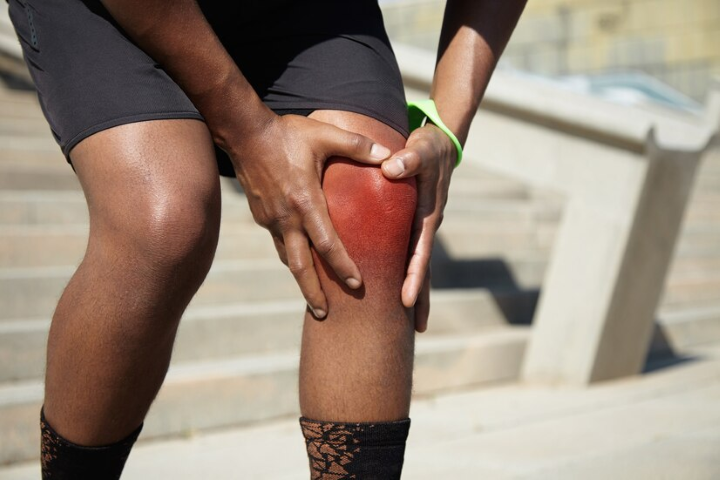Ten common knee injuries and treatment- Dr. Ratnav Ratan: Knee injuries are a common reason for people to visit the doctor. Knee pain and injury accounted for more than ten million stays at the specialist’s clinic in 2010.
The majority of these visits were due to the same issues. Knee injuries are often treatable at home, but some are severe enough to necessitate surgery.
In this article, Dr. Ratnav Ratan, an excellent sports injury doctor from Gurgaon, discusses the knee anatomy, common knee injuries, and treatment options.
The following are ten common knee injuries.
The knee is a complex joint to understand. It proceeds like a door hinge, letting an individual to:
- Sit
- Run by bending
- Squat
- Jump
- Straightening their legs
The knee consists of four parts:
- bones
- ligaments
- tendons
- cartilage
The femur, or thighbone, is located at the knee joint’s top.
The knee joint bottom is made up of the shinbone. The patella, also known as the kneecap, protects the femur and the tibia joint. The cartilage is the tissue that cushions the knee joint bones, helping ligaments slide easily over the bones and protecting the bones from impact.
Four ligaments act like ropes in the knee, holding the bones together and stabilizing them. Tendons connect the upper and lower leg bones to the muscles that support the knee joint. Knee injuries come in a variety of shapes and sizes. The following are ten of the most common knee injuries.
- Fractures
According to Dr. Ratnav Ratan, one of Gurgaon’s best orthopedists, a fracture can occur in any bones in or around the knee. The patella, or kneecap, is the most commonly broken bone in the joint. Most knee fractures are caused by high-impact trauma, such as a fall or a car accident.
By tripping or stepping in the wrong direction, people with osteoporosis can fracture their knees.
- Injuries to the anterior cruciate ligament
The anterior cruciate ligament (ACL) drives crossways across the knee’s front and provides critical joint stability. ACL injuries can be severe and necessitate surgery. On a scale of one to three, ACL injuries are graded. A grade 1 sprain is a minor ACL injury, whereas a grade 3 tear is a complete tear.
ACL injuries are common in athletes who participate in sports like football or soccer. Contact sports, however, are not the only cause of this injury.
A tear in the ACL can occur if you land incorrectly from a jump or change direction too quickly.
- Displacement
It is called a dislocation when the knee bones are out of place and in alignment. One or more bones may slip out of place in a knee dislocation. A knee dislocation can be caused by structural abnormalities or traumas such as:
- Car accidents
- Falls
- Sports
- Meniscal tears
When people talk about torn cartilage in the knee, they most likely refer to a meniscal tear. Between the thighbone and the shinbone are two rubbery wedges of cartilage called menisci. During sports activities, these cartilage fragments can tear unexpectedly. They may also tear over time as a result of aging.
A degenerative meniscus tear occurs when the meniscus tears due to the natural aging process. A pop may be heard or felt in the knee with a sudden meniscus tear. Pain, swelling, and tightness may worsen in the days following the initial injury.
- Bursitis
Bursae are tiny fluid-filled sacs that cushion knee joints and allow tendons and ligaments to glide over them easily. These sacs can swell and inflate with overuse or repeated pressure from kneeling. This is known as bursitis. Most cases of bursitis are not severe and can be treated by self-care.
Nevertheless, some instances may need antibiotic remedy or aspiration, which is a procedure that uses a needle to withdraw excess fluid.
- Tendonitis
Tendonitis or inflammation in the knee is known as patellar tendinitis. This injury to the tendon connects the kneecap to the shinbone.
The patellar tendon works with the front of the thigh to extend the knee to:
- Run
- Jump
- Perform other physical activities
Often referred to as jumper’s knee, tendonitis is common among athletes who frequently jump. “However, any physically active person can be at risk of developing tendonitis,” says Gurgaon-based orthopedic Dr. Ratnav Ratan.
- Tendon tears
Tendons are soft tissues that connect the muscles to the bones. In the knee, a common tendon to be injured is patellar.
It is not unusual for athletes or middle-aged individuals interested in physical exercises to rend or overstretch tendons.
Immediate impact from a hit or fall may also cause a tear in the tendon.
- Collateral ligament damages
Collateral ligaments attach the thighbone with the shinbone. Damage to such ligaments is typical for athletes. Collateral ligament incisions usually happen because of an immediate impact or crash with another individual or entity.
- Iliotibial band syndrome
This syndrome is typical among runners. It is caused when the iliotibial band, located on the outside of the knee, rubs against the outside of the knee joint.
Typically, the pain starts as a minor irritation. It can gradually build to the point where a runner must stop running for a period to let the iliotibial band heal.
- Posterior cruciate ligament injuries
The posterior cruciate ligament is located at the back of the knee. It is one of the many ligaments that connect the thighbone to the shinbone. This ligament keeps the shinbone from moving too far backward. An injury to the posterior cruciate requires powerful force while the knee is bent.
This level of force typically occurs when a person falls badly onto a bent knee or is in a mishap that affects the knee when it is bent.
When to see a doctor
If knee discomfort gets chronic, is intense, or stays for more than a week, an individual should consult a specialist. It is essential to see a doctor if a reduced range of motion in the joint or bending the knee becomes difficult. In blunt force or trauma cases, a doctor should be seen immediately after an injury has occurred.
Treatment options
Physical therapy is one type of knee treatment. Treatment will vary based on the cause of the knee pain and the specifics of the injury. In cases of strain or overuse injuries, rest and ice will typically allow the knee to heal over time.
Treatment may also concern controlling discomfort and inflammation with medicine. In most cases, an individual will require to relax for some time. Tears or other trauma-induced damages may need bracing or surgery to pop the knee back into position. In the case of surgery, a person will likely not be able to use the knee after the procedure and may need either crutches or a wheelchair while recovering.
In some cases, physical therapy may be needed to help a person regain movement and strength in their knee and leg.
Prevention
According to Dr. Ratnav Ratan, Gurgaon’s outstanding orthopedic doctor, Preventing knee injuries is not always possible, but a person can take precautions to reduce the risk. For instance, people who run or play sports should wear the appropriate shoes and protective gear. In issues of iliotibial band syndrome and overuse damages, individuals may consider decreasing the number of miles they sprint.
Specific activities also help maintain the more small leg muscles, stopping injury. Ultimately, stretching before and after an exercise can aid prevent damage to the knees. Proper nutrition, especially for athletes, is also essential. Protein, calcium, and vitamin D are necessary for maintaining:
- Healthy bones
- Muscles







